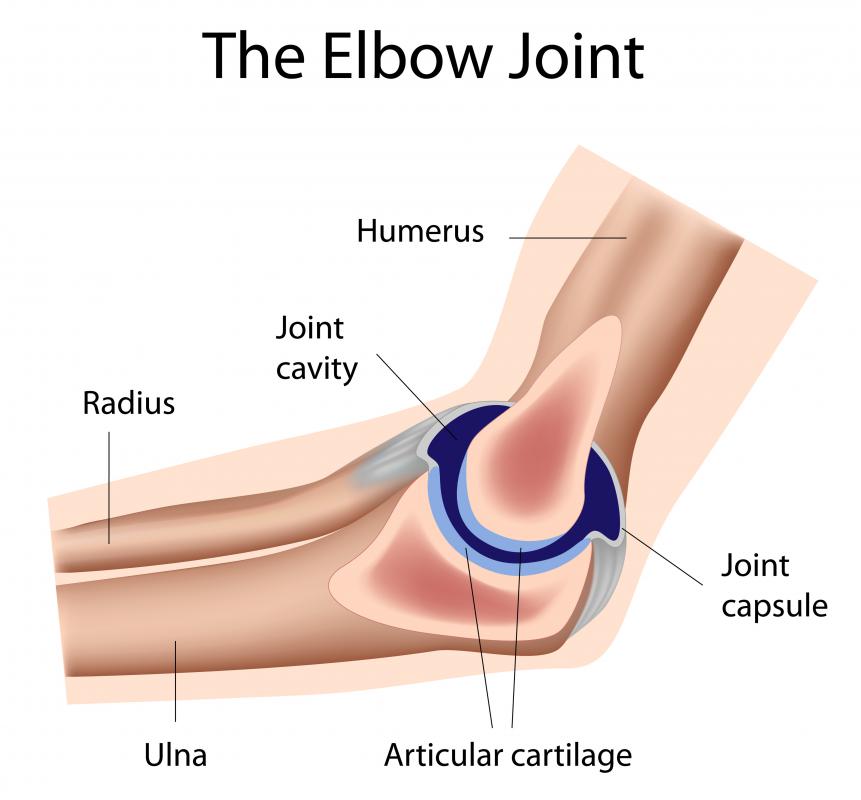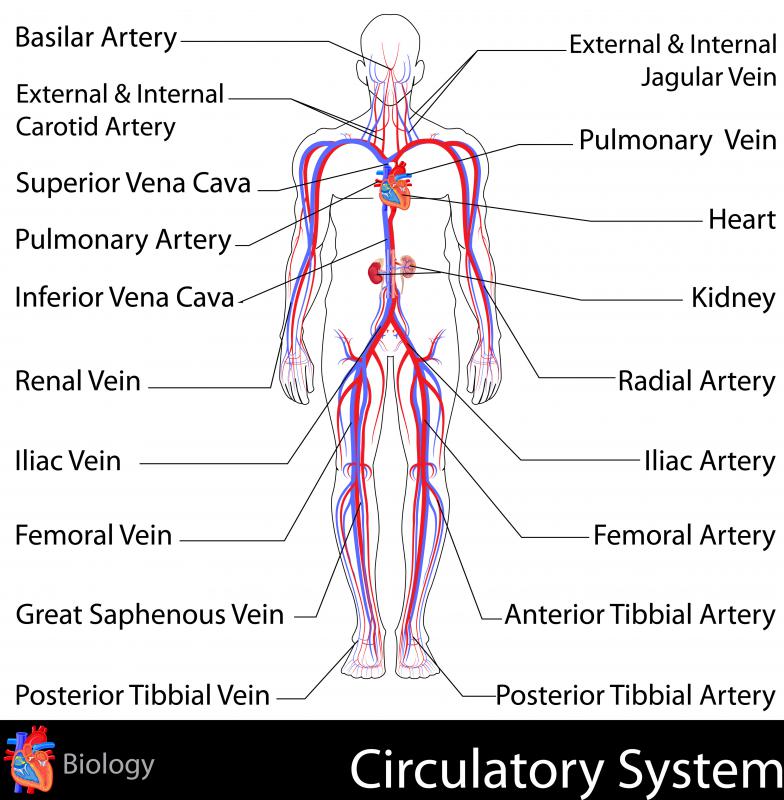At WiseGEEK, we're committed to delivering accurate, trustworthy information. Our expert-authored content is rigorously fact-checked and sourced from credible authorities. Discover how we uphold the highest standards in providing you with reliable knowledge.
What is the Radius Bone?
The lateral bone of the forearm that is located between the elbow and the hand and that is always aligned with the thumb is called the radius bone. "Lateral" is a term that refers to the side of the body or the position that is farthest away from the mid-line of the torso when the body is in what is known as the anatomical position, described as a person who is standing facing forward with the palms of his or her hands also turned forward. Palpating the lower arm might feel like there is only one, somewhat flat bone in the extremity, but the forearm is supported and shaped by two distinct bones: the radius bone and the ulna bone.
Part of the radial artery, which is a blood vessel and one of the major suppliers of oxygenated blood to the lower arm, lies close to the surface of the body and crosses over the radius bone, creating the radial pulse, which derives its name from the radius and can be palpated with a fingertip. This is the area that most often is felt by healthcare providers to take a person's pulse, a vital sign of life. It is, however, a peripheral pulse and usually is not checked to verify whether a person is alive.

There are different categories into which all of the approximate 206 bones comprising the skeleton belong: long, short, irregular and flat. The radius bone is considered long. Growth of the body occurs in long bones, in what are known as growth plates, by an increase in the length of the bones of the arms, legs and back.
Fractures of the radius bone can cause swelling, deformity and severe discomfort, but the signs of swelling and deformity might not be very visible if the ulna is uninjured. The same can be true in cases involving a fracture of the ulna but no injury to the radius. X-rays of the extremity are taken to reveal any fractures that need to be treated.

Medical intervention by emergency medical technicians for patients with any deformity and tenderness in the forearm usually involves applying tension while splinting the extremity using a padded and rigid splint. Application of a sling and swathe generally follows splinting. The shaft of the radius bone, like all long bones, is slightly curved, although it appears to be straight when viewing X-rays, drawings or photographs of this part of the skeleton.
AS FEATURED ON:
AS FEATURED ON:

















Discussion Comments
@jmc88 - I can technically answer yes to your question. When I played baseball in high school, I slid into second base and ended up with what was called a distal radius fracture. I believe distal just refers to the part of the bone away from the body.
Even though my radius was actually broken, it was basically a broken wrist that I had. Luckily, my injury wasn't as serious as some others'. I was able to wear a cast for a little less than 2 months, and I was fine after that. I know that for some people, they have to have surgery to remove pieces of bone, and their wrist is never the same.
As for the pain, I don't remember it being excruciating. There was a lot of adrenaline to balance things out. The swelling started very quickly, though, which made it a little painful to try to move my wrist.
Would someone mind explaining the growth plates to me? Our bones most definitely don't start out at the same width when we are children as when we are adults, but the article mentions that the growth is in length. What mechanism makes our bones get wider with time?
Also, does anyone have any good tips for remembering the bones of the arm? I seem to remember learning some type of mnemonic device in my health class that helped me remember where the ulna and radius bones were. I always get them mixed up.
Has anyone here ever had a radius fracture? Fortunately for me, I have never broken any bones (expect maybe a toe one time, but that's nothing really). I have never had any friends who have broken an arm bone, either.
I'm just curious to know how much it hurts and what kind of discomfort there is wearing the cast for a couple of months.
Post your comments